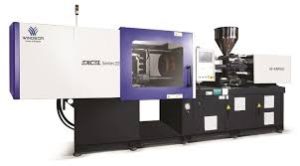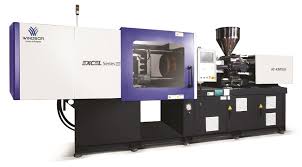Injection molding machines are critical in the manufacturing sector, particularly for producing high-quality plastic parts. This guide explores their operation, types, benefits, and applications.

What is an Injection Molding Machine?
An injection molding machine is a manufacturing tool that produces parts by injecting molten material into a mold. While primarily used for plastics, these machines can also handle metals, glass, and other materials.
Key Components
- Injection Unit: Melts the material and injects it into the mold. It includes a hopper, barrel, and screw or plunger.
- Clamping Unit: Holds the mold in place during injection and opens it after cooling. It applies pressure to keep the mold closed.
- Mold: A hollow block that shapes the injected material, typically made from steel or aluminum.
- Control System: Manages temperature, pressure, and other parameters for efficient operation.
How Injection Molding Works
The process consists of several steps:
- Material Feeding: Plastic pellets are loaded into the hopper.
- Melting: The pellets are heated and melted in the barrel.
- Injection: The molten material is injected into the mold under high pressure.
- Cooling: The material cools and solidifies inside the mold.
- Ejection: The mold opens, and the finished part is ejected.
Types of Injection Molding Machines
1. Hydraulic Injection Molding Machines
These machines use hydraulic systems, offering power and reliability for large-scale production.
2. Electric Injection Molding Machines
Utilizing servo motors, these machines provide energy efficiency and precision, ideal for smaller parts.
3. Hybrid Injection Molding Machines
Combining hydraulic and electric technologies, hybrid machines offer a balance of efficiency and performance.
Advantages of Injection Molding Machines
- High Efficiency: Capable of producing thousands of identical parts quickly.
- Precision and Consistency: Ensures tight tolerances and high dimensional accuracy.
- Complex Designs: Can create intricate shapes that are hard to achieve with other methods.
- Material Versatility: Compatible with a wide range of materials.
- Reduced Labor Costs: Automated operation minimizes manual labor requirements.
Applications
Injection molding machines are widely used in:
- Automotive: For components like dashboards and bumpers.
- Consumer Goods: Producing items such as bottles and toys.
- Electronics: Creating housings for devices like smartphones.
- Medical Devices: Manufacturing precise parts for syringes and instruments.
Conclusion
Injection molding machines play a vital role in modern manufacturing, providing speed, precision, and versatility. Understanding their operation and applications can help businesses make informed decisions about their production processes. As technology advances, these machines will continue to enhance manufacturing capabilities across various industries. read more…







